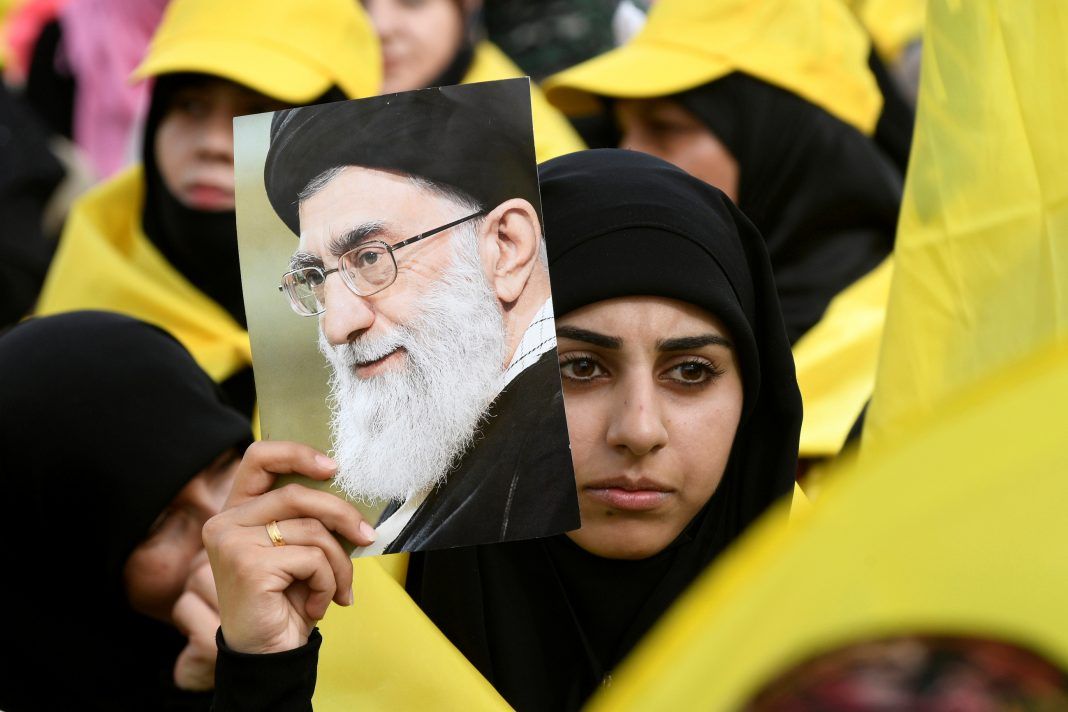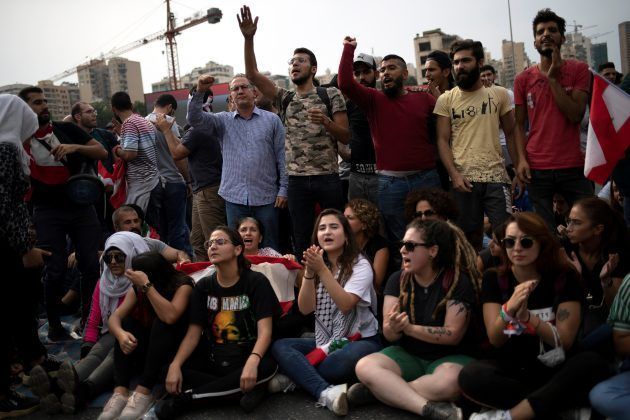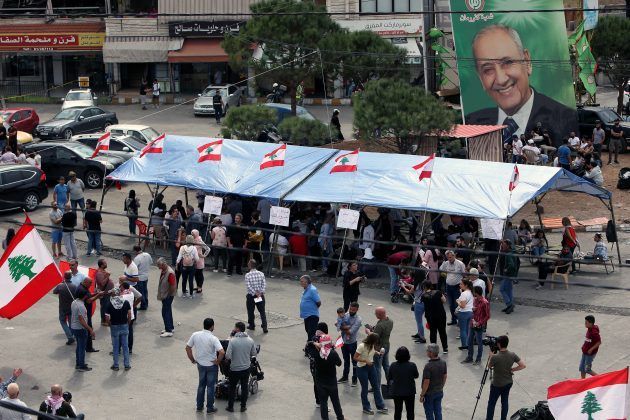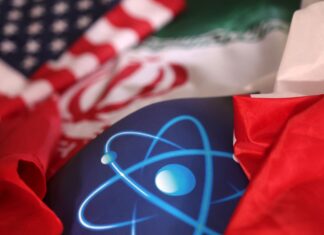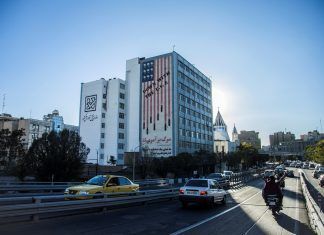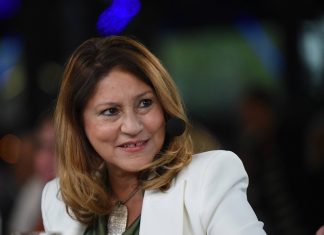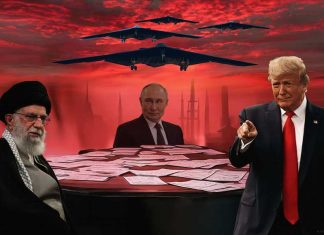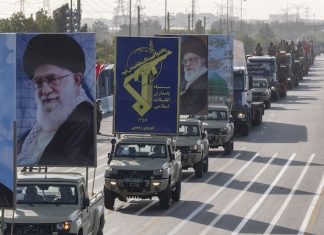By Ahmad Rafat
Tens of thousands of Lebanese marched in the streets of their capital city Beirut earlier this month to protest against the prevailing economic crisis, high unemployment, and widespread corruption in the country. The demonstrators tried to block the entrance to the Lebanese Parliament to prevent members from casting their vote of confidence for the new Prime Minister Hassan Diab and his government.
Footage on social media and several network news outlets showed plainclothes security officers, Hezbollah agents and members of the Shia Amal Movement brutalizing the protesters. According to a report by the Lebanese Red Cross, clashes between the demonstrators and security forces left some 400 people injured.
The Lebanese Parliament ultimately passed the motion with 69 votes cast by members of Hezbollah, the Shia Amal Movement, and President Michel Aoun’s Free Patriotic Movement comprised mostly Christian deputies.
According to Lebanese law, the prime minister must be a Sunni Muslim. Many Sunni groups, Christians and Druze (Arabic-speaking religious sect), however, either rejected the motion or did not vote at all.
Meanwhile, the nationwide protest, which began on October 17 in Lebanon, continues.
The unrest forced former Prime Minister Saad Hariri to resign on January 21. Subsequently, no candidate received the number of votes from various political parties needed to form a government. Hezbollah, the Shia Amal Movement, and the Free Patriotic Movement hold the majority seats in the current Lebanese Parliament.
Mr. Hariri’s government also included members of the Progressive Socialist Party (PSP), Druze, and the Lebanese Forces (a Christian political party and former militia during the Lebanese Civil War.)
The anti-government protesters have been calling for a complete overhaul of the political and economic systems in the country that would end high unemployment, rampant corruption, and sectarianism.
One of the more significant aspects of the recent protest is the large presence of young people from Lebanon’s Shia community.
Since the creation of Hezbollah in 1985, this is the first time that thousands of protesters have poured into the streets in the southern districts of Beirut and other Shia towns that have been under the control of the Iranian-backed groups for many years, including Tyre, Nabatieh and Bint Jbeil.
Besides the slogans against corruption and sectarianism, the young Shia protesters were also shouting “All Means Everyone Including Nasrallah,” referring to the Secretary-General of Hezbollah, Hassan Nasrallah.
Widespread protests and bold slogans show Hezbollah’s declining power and prestige in Lebanon. Even the Beirut-based pro-Hezbollah Al-Manar TV was forced to interview some protesters, some of whom argued that Hezbollah’s involvement in Yemen and Iraq had caused the crisis in Lebanon.
Walid Phares, a Washington-based Lebanese-American conservative political analyst and commentator who worked for the Republican presidential campaign of Donald Trump in 2016, has described the recent protests in Beirut as “a genuine and robust revolution,” which can set a new course for the country if “it follows a correct strategy.” Mr. Phares has published 12 books in Arabic, English, and French.
[aesop_image img=”https://kayhanlife.com/wp-content/uploads/2020/02/Walid-Phares.jpg” panorama=”off” credit=”Walid Phares. KAYHAN LONDON” align=”center” lightbox=”off” captionsrc=”custom” captionposition=”left” revealfx=”off” overlay_revealfx=”off”]
Phares also published “Background of the Khomeinist Islamic revolution in Iran” in arabic in Beirut 1986. Jaffar Shafizadeh was a commander of a revolutionary tactical unit and a personal bodyguard of the founder of the Islamic Republic Ayatollah Ruhollah Khomeini during his stay in Neauphle-le-Chateau, France in 1978 and afterward in Tehran.
Phares discusses Iranian opposition groups and the Islamic Republic’s efforts to undermine the Arab Spring in his last book, “The Lost Spring: U.S. Policy in the Middle East and Catastrophes to Avoid,” published in English in 2014.
The following is Kayhan Life’s interview with Walid Phares:
Hezbollah was created in the offices of the Iranian Ambassador to Syria Ali Akbar Mohtashamipur in 1985. What role has the organization played in Lebanese politics since then?
Hezbollah was the brainchild of the Islamic Republic. There was no Hezbollah in Lebanon until Khomeini came to power in Iran in 1979. There were only the Shia Amal Movement and the “Movement of the Dispossessed.” Hezbollah is the offspring of the Islamic Republic and the Islamic Revolutionary Guards Corps (IRGC). The bankrupt political system in Lebanon provided a fertile ground for the development of Hezbollah.
With the help of the former Syrian President Hafez al-Assad (1930-2000), Hezbollah gained control over Lebanon in the 1990s. The Lebanese people challenged Hezbollah’s authority for the first time in 2005. The assassination of former Lebanese Prime Minister Rafik Hariri in the same year sparked widespread unrest dubbed “Cedar Revolution,” which ultimately forced Syria to withdraw from Lebanon officially. Subsequently, the United Nations adopted Resolution 1559, which called for the disarmament of Hezbollah.
Hezbollah, however, never disarmed. It is an illegal armed group. It occupied Beirut in 2008 and has been controlling the city ever since. Hezbollah controls the Lebanese government, Parliament, state institutions, and even some segments of the military. It is a mistake to think of the organization as just another Shia militia group because it has been part of Khomeini’s Islamic Revolution for a long time.
Hezbollah enjoyed massive support among Shia and Christian communities in Lebanon until recently. How did it lose its popularity?
Hezbollah did not expect civil unrest — namely the revolution — which started in October 2019 and continues to this day. Back in 2008, Lebanese people had concluded that it was impossible to revolt against Hezbollah because the group had reached a verbal agreement with other parties according to which it left the economy of the country to others to manage while it controlled the military and security affairs. In other words, Hezbollah gained the right to arm itself by receiving a political concession from other political parties.
The organization urged Lebanese people to stay out of politics and enjoy relative economic prosperity instead. What ultimately tipped the balance against Hezbollah was rampant corruption in the country, spearheaded by President Michel Aoun, who has close ties to the group. Lebanon had a massive foreign currency reserve, which is now all but gone. Lebanese people have suddenly realized that they have lost both their freedom and economic prosperity.
Hezbollah and its supporters had hoped that changing the prime minister and the cabinet would put an end to the protests. They were, however, wrong because the unrest is a genuine and robust revolution. Although it is not an armed struggle, the movement has disarmed the government and all political parties.
Lebanese people crave a fundamental change that Hezbollah cannot accept because it would cause the election of an independent government, which will fight corruption and will call for decommissioning the organization. An independent and democratic Lebanon cannot tolerate militias on its soil. If disarmed, Hezbollah will lose its control of Lebanon.
The most significant aspect of the recent protests is the participation of young Shias in the marches. Young people have poured into the streets of Shia towns that have been under the control of the Iranian-backed groups for years, including Tyre, Nabatieh, and Bint Jbeil. Lebanese youth want to live normal lives in a stable country.
Can the death of the former commander of the IRGC’s Qods Force (IRGC-QF) Lieutenant General Ghasem Soleimani signal the end of Iran’s so-called “Resistant Front” with Hezbollah as its principal component?
It will depend on the future foreign policies of Iran and the U.S. As far as Washington is concerned, the Islamic Republic regime and the IRGC have systematically terrorized Iranian people. The Qods Force, under the command of General Soleimani, expanded Iran’s presence and influence in Syria, Iraq, Yemen, and other parts of the region using Shia militias.
When President Barack Obama withdrew the U.S. military forces from Iraq, he handed the country to Shia militias. Subsequently, some groups in the country supported the Islamic State of Iraq and the Levant (ISIS), which prompted the U.S. military to return to that region.
Instead of thanking the Americans for defeating ISIS, General Soleimani, and the troops under his command quickly occupied the territories that had been liberated by the U.S. military.
Soleimani and Shia militias also launched a new wave of attacks against the American military forces in Iraq. Washington had tolerated Tehran’s activities in Iraq and the region up to this point.
The widespread street protests by ordinary Iranians, Iraqis, and Lebanese in the past year have frightened the IRGC and the Qods Force, particularly after young Shia Iraqis joined the Sunni Muslims and Kurdish minorities in the street marches against the presence and influence of Iran in their country.
The Iranian regime can either restart its attacks against the U.S. interests and forces in the region or wait until the November 2020 elections, hoping for a new president in Washington who might adopt a more conciliatory approach toward Tehran.
Does this mean Hezbollah will continue to control Lebanon?
The fate of Lebanon is intrinsically linked to that of the Iranian regime. We will not see any real changes in Lebanon as long as the Islamic Republic continues to fund and arm the organization. Hezbollah will collapse quickly without its military wing. It might survive as a political party by securing a small percentage of the seats in the Parliament, but it will not exert any real influence.
[aesop_image img=”https://kayhanlife.com/wp-content/uploads/2019/03/2016-05-05T120000Z_2033216091_S1BETCHAJEAA_RTRMADP_3_MIDEAST-CRISIS-LEBANON-IRAN.jpg” panorama=”off” credit=”REUTERS/Aziz Taher” align=”center” lightbox=”off” captionsrc=”custom” caption=”FILE PHOTO: Ali Akbar Velayati (R), Iran’s Supreme Leader Ayatollah Ali Khamenei’s top advisor on international affairs, talks with Lebanon’s Hezbollah deputy leader Sheikh Naim Qassem during a conference under ‘The World Federation of Resistance scholars’ on the subject of ‘resistance to liberate, terrorism to destroy’ in Beirut May 5, 2016. ” captionposition=”left” revealfx=”off” overlay_revealfx=”off”]
[Translated from Persian by Fardine Hamidi]

